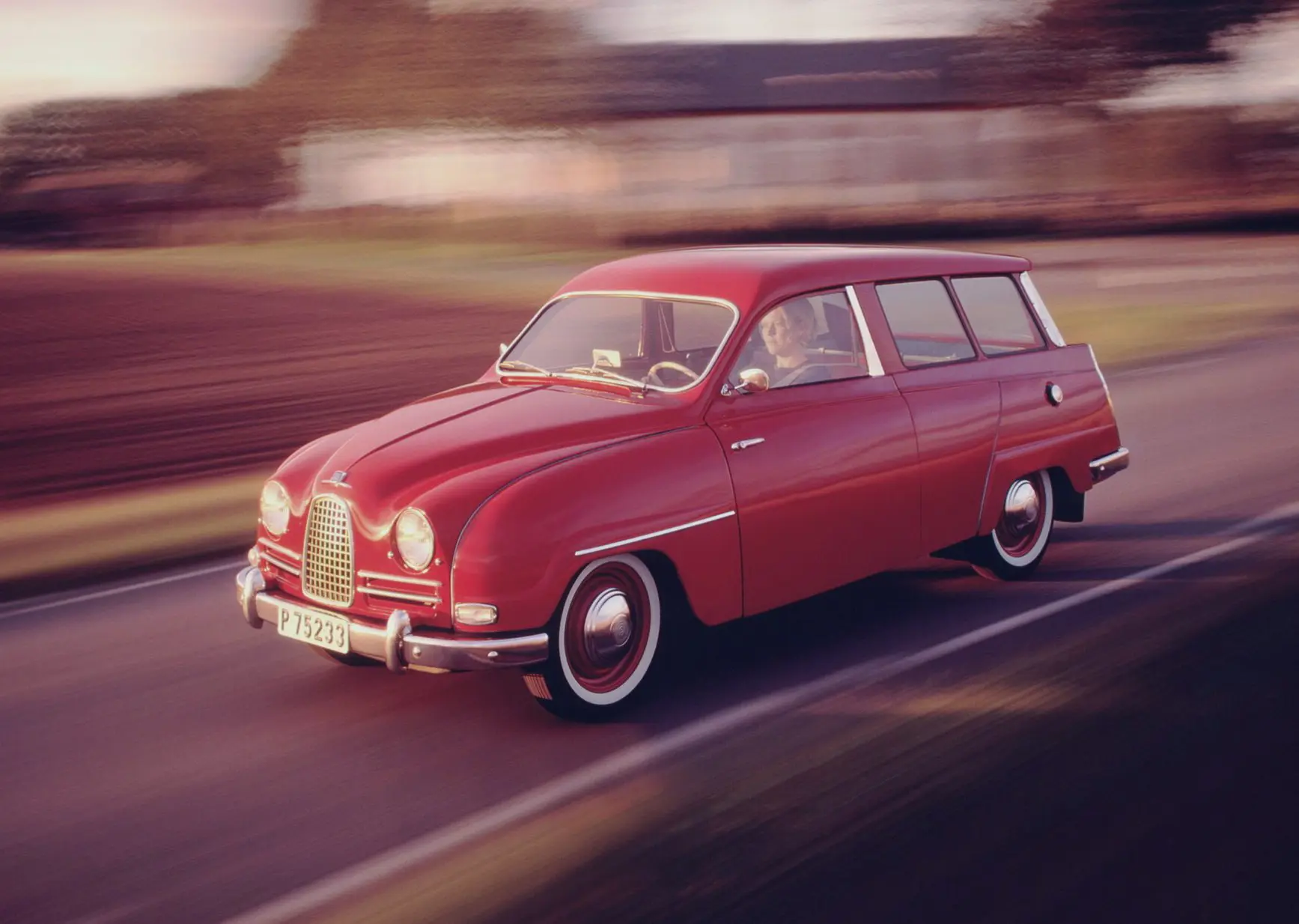THE SAAB 95 TWO-STROKE; A CELEBRATION
07 April 2022
It is sometimes forgotten the 95 made its bow in May 1959, nine months before the 96 saloon. British sales commenced in the following year when the Saab cost a formidable £1,199 – or only £23 less than the much larger Velox PA ‘Friary’ Estate. But then, the average big Vauxhall customer was as far removed from the Saab ethos as Carry On Constable was from The Seventh Seal. For one, the 95 made no concessions to automotive fashion, its lines harking back to the 1940s. Inside of the six cylinders you might reasonably expect in a car costing over £1,000, there was an 841cc 2-stroke 3-cylinder unit. The four-speed transmission included a freewheel – it permitted the driver to change gear without employing the clutch – and the engine was very noisy. The Saab was the sort of car whose approach you could anticipate from several streets away. The driver also had to add oil to the petrol at a rate of a quart per six to eight gallons.

Yet, for those motorists who appreciated true quality rather than chromium plate, the 95 was a very desirable machine. Erik Carlsson drove a 95 to fourth place in the 1961 Monte Carlo Rally and thought it “handled and drove every bit as well as the 96”. There was also a rear-facing third row of seats, a facility not found in any contemporary British rival. Not every Briton was convinced of its merits and Bill Boddy of Motor Sport complained “the engine doesn’t pull the skin off the proverbial milk pudding unless it is revving, so that continual gear-changing is called for”. Furthermore., “it is old-fashioned in so many aspects that it is not worth buying merely because it is foreign—a foreign car is often attractive because it is “different” but it must also show superiority over native products to justify import duty”,
The result was letters from Saab devotees to Motor Sport, while Autocar of the 12th July 1963 praised the “remarkably good handling qualities and quiet running, which help make it tireless to drive”. The price was now a fairly steep £966 5d, but it included a very effective heater, a clock, a radiator blind, and such clever touches as adjustable front door armrests. With the 95, you would also have the social kudos of owning one of your neighbourhood’s few FWD station wagons. The Austin Seven Countryman/Morris Minor Traveller debuted in 1960, but they were a different type of car while the UK motor industry largely otherwise ignored front-wheel-drive estates.
In 1964 Saab facelifted the 95/96, and the ‘long-nose’ model sported, according to the sales copy, “taut, slim, lean lines”. However, 2-stroke motoring now seemed faintly archaic in Western Europe and in 1966, the company adopted the 1.5-litre V4 from the Ford Taunus. 2s production ceased in 1968, ten years before the demise of the 95. And should you need a further incentive to seek out one of the very few survivors, take a look at this 1961 cinema advertisement.
